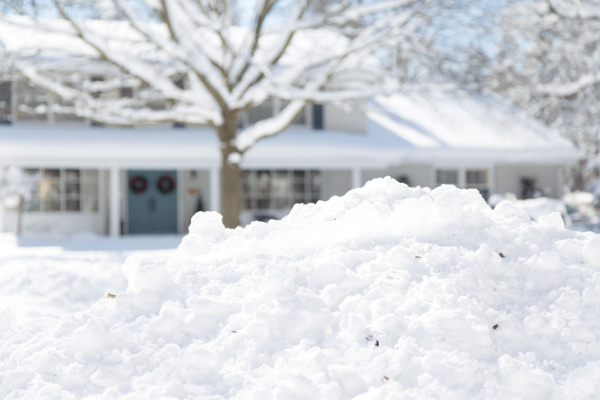The second month of the year is the snowiest for many regions of the United States, and for other areas, the peak in snowfall occurs even later toward the springtime.
As AccuWeather reports, Climatologist Brian Brettschneider compiled snowfall data from around the United States and Canada, creating a map to show which month is the snowiest for each location with an average annual snowfall total of at least 6 inches. The data was compiled from the Global Historical Climatology Network Daily (GHCN-D).
It may come as a surprise that the month with the most snowfall occurs after the end of solar winter, which is the quarter of the year with the least daylight spanning from Nov. 6 to Feb. 5, in the Northern Hampshire. Solar winter spans roughly 45 days before and after the winter solstice.
The map is a colorful one, and it shows that the snowiest month of the year can vary quite a bit from region to region, but February stands out as the biggest snow month for major cities in the northeast U.S., including New York City and Washington, D.C. Farther west, parts of the nation’s heartland, such as Nebraska and South Dakota, which make up part of Blizzard Alley, also experience the highest volume of snow in February.
For the western portion of the Midwest, there are two periods when the area gets hit the most by winter weather: November into December and February into March. But as temperatures start to rise in March, the precipitation events become more mixed and eventually transition into rain events, according to AccuWeather’s long-range team.
Moving from the heartland to the eastern side of the country, portions of the Northeast, including eastern New England, also experience peak snowfall in February. Large metropolitan areas such as Washington, D.C., Baltimore, New York City and Boston all typically experience the most snow in February.
The AccuWeather long-range team says the reason for this is due to water temperatures along the Atlantic coast taking longer to cool than the ground. Because of this trend, warmer water in the western Atlantic often leads to more episodes of rain and mixed precipitation events earlier in the winter season.
“Later in the season, when the waters cool, and more cold [air] becomes available, storms can lean more on snow,” explained AccuWeather Lead Long-Range Forecaster Paul Pastelok.
Nor’easters play a part in why February is the snowiest month for these Northeast locations. In the past, the biggest nor’easters have occurred in the months of February and March, which have tipped the climatology on that side for the area.
One such storm was the Northeastern United States blizzard of 1978, which was a historic February blizzard that resulted in over 4,000 injuries and 100 fatalities. The storm brought over 27 inches of snow to Boston and Providence. In the 2010s, several historic blizzards swept through the region in February such as the 2015 “snowpocalypse” and the 2017 North American blizzard.
Across the border in Canada, February is the snowiest month for small portions of the Labrador Peninsula and southern Alberta. In Newfoundland and Labrador, winter can be especially severe as heavy snowfall and blizzards impact the area.
Even though several areas pick up more snow during February than any other month, December and January are the snowiest months across a wider geographical area of the U.S. and also Canada. Much of interior New England, the Ohio Valley and the Midwest are among the areas that experience peak snowfall during January.
But some areas experience their snowiest before winter even begins, such as the case with portions of northern Alaska and Canada.
Utqiagvik, Alaska, the northmost city in the United States, experiences its snowiest months in September and October. These northern areas do much better for snow in early fall because there is more moisture available in the atmosphere in those regions at this time of year. Very cold and dry airmasses set up across the northern areas and eventually ice up the water which significantly cuts off the moisture supply for the winter.
The Rockies can have their snowiest month any time between December and March. Along the Front Range of the Rockies, in eastern parts of Colorado and Wyoming, many must wait until March and April to experience their snowiest month. On average, Denver records its snowiest month in March and its second-snowiest month in April. The Mile High City can even record snowfall as late as June, when it averages a trace of snowfall for the month.
—
Photo Credit: sherwood / Shutterstock.com
